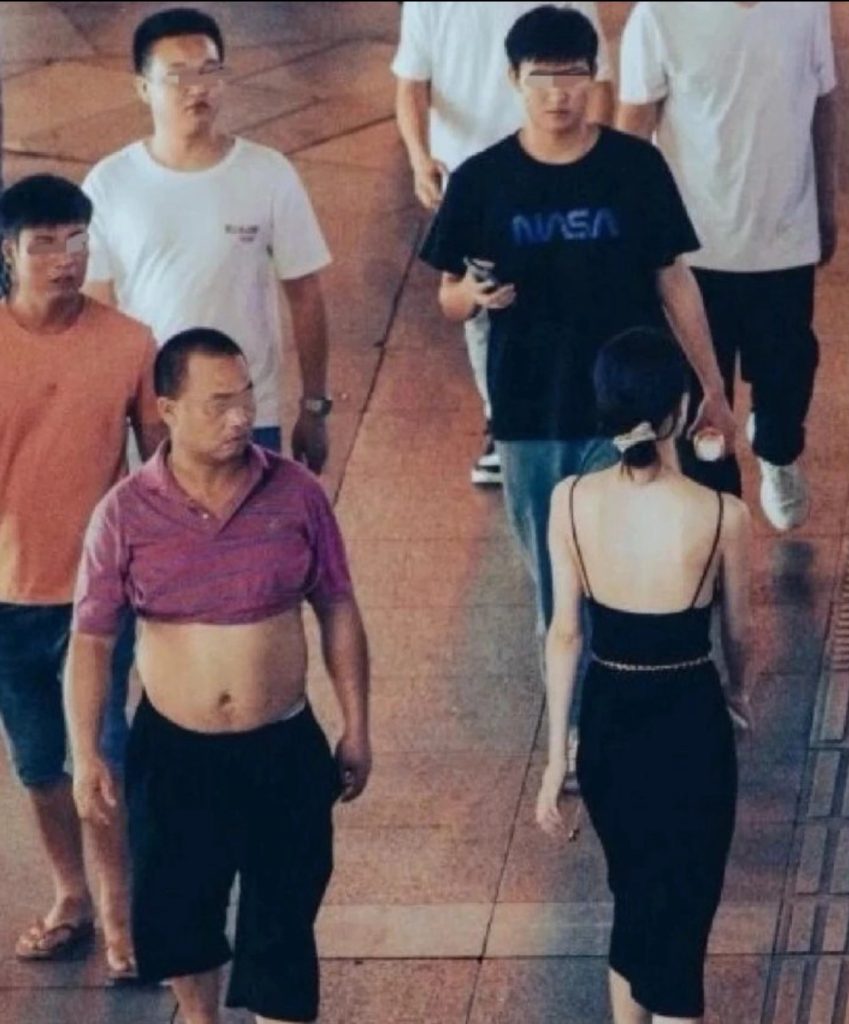вАЬSeeing comes before words.¬†The child looks and recognizes before it can speak.”
–John BergerгАКways of seeingгАЛ

Before discussing the male gaze, it is important to first introduce its parent concept: the gaze. According to Wikipedia, the gaze is used to analyse how the viewer perceives the person being shown in visual culture. “The gaze is categorised primarily by who the viewer is. When we are attracted to someone or something, we focus our attention on it.
So in a sense, we live under the gaze all the time, or there is always someone who gets a kick out of ogling women, as dictated by patriarchal society. Throughout history, men have had the superiority of being in charge of the vast majority of the discourse.
Especially in the traditional Chinese model of power and division of labour, women are in an absolutely disadvantaged position, while men are in charge of fame, profit and power, and “gaze” at women from a top-down perspective.
The concept of Male Gaze was first introduced by film critic Laura Mulvey in Visual Pleasure and Narrative Cinema, who argued that in cinema, men tend to be the power-holders and subjects of the gaze, while women are the objects to be gazed at, and that the majority of popular films overwhelmingly satisfy men’s voyeuristic pleasures.
A range of cinematic conventions force viewers to see the world through a stereotypically male, heterosexual lens.
In the following scene, the director’s use of close-ups, in which Cora Smith, the film’s female protagonist, slowly emerges into the viewer’s eyes, causing the viewer to unconsciously gaze at the curves of Cora’s sensual body, is a highly seductive and erotic portrayal. The gaze that emerges from the male protagonist’s reaction is one of intense selfishness and voyeurism.
Under this male gaze, its expression is the increasing tension between men and women in contemporary society and the unequal relationship between men and women. Do women have to accept the male gaze? Must women’s beauty be subject to men’s aesthetics? The answer is no.
The word “sexuality” in its own sense is aggressive because men tend to be dominant and aggressive when they gaze at women. This is why women feel particularly strong insecurities when they are alone in public. For example, a woman is home alone and needs to find someone to repair her plumbing. She leaves a pair of men’s slippers at the door and tells the repairman that her boyfriend is away on business, so she asks him to fix it.

This example speaks for itself and is paradoxical at the same time. The current social environment has created a very strong sense of insecurity among women. But at the same time this sense of security is given by the patriarchal society. So if the woman herself does not fear or care about the gaze, she can also “gaze” at the man.
Let’s return to the theme of male gaze, because there are biological differences between men and women, so they can’t really empathise with each other, and the excessive insights of either side may become a kind of invisible prejudice and violence.
Therefore, treating the “gaze” in the same way is not equality, but a deeper antagonism and stereotyping between the genders, but rather an intensification of the retaliation of both parties.
Correct treatment requires us to focus on the realm of self and self-expression. The respect of others can be gained not only through appearance but also through culture and education. Because the “gaze”is not about knowledge, it’s about character.
Yuwei Li w1900042

